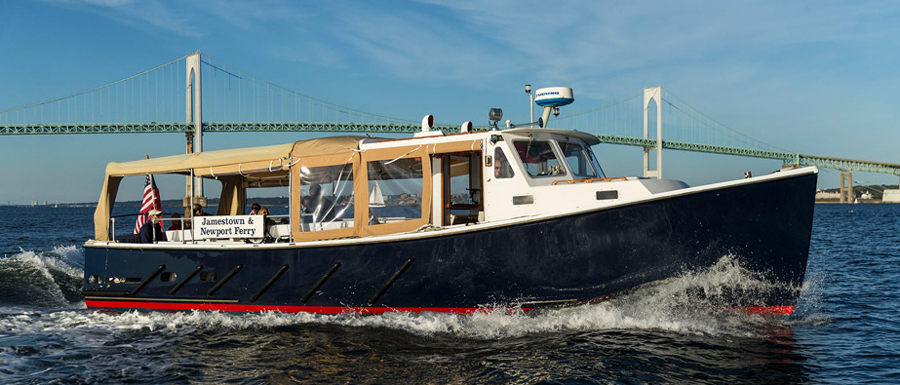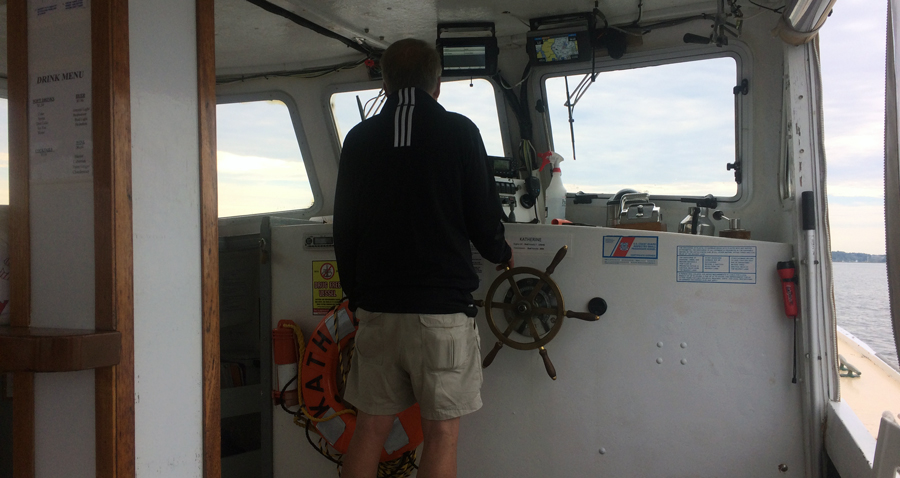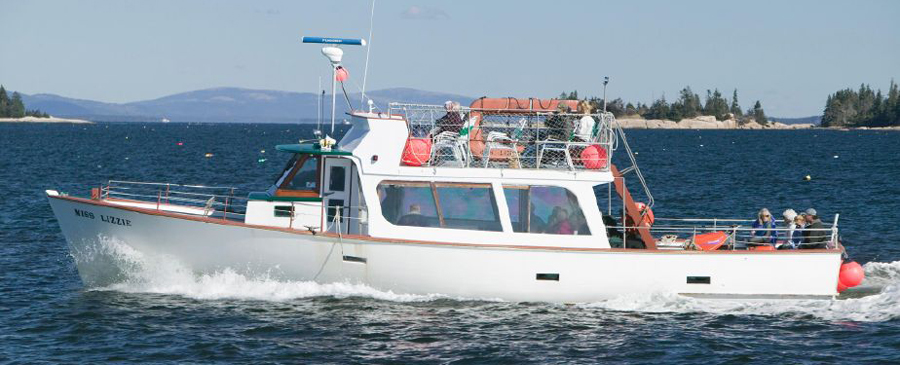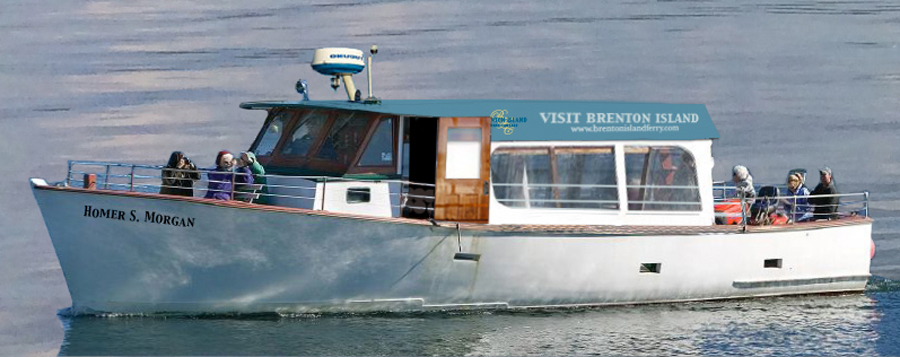Next Wednesday evening, along with a few fans, I’m celebrating the almost-3-month publishing anniversary of Ferry to Cooperation Island by going for a real ferry ride! The Jamestown to Newport Ferry is hosting an exclusive cruise onboard Katherine, the boat that originally inspired the novel’s own ferry. It’s really exciting to have an in-person event, especially one that combines a sunset cocktail cruise with a reminder of where this all started.
Want to know how this ferry ride turned out? Read Ferry Ride Surprise Rescue. Or read on for an explanation of how Brenton Island’s own quirky ferry boat developed out of this actual vessel—especially since it shows how my imagination warps what I see around me to fit a story.

When I first started writing this book, all I had was a main character: a curmudgeonly ferry captain who valued his privacy. The very first scene I wrote took place underway, onboard the ferry in a private wheelhouse. (Ever been on a small ferry with a bulkhead between passengers and captain? Me neither.) The boat was named the Homer S. Morgan, but that’s about all I knew about his vessel.
Next, I wrote the scene that would eventually be hammered and kneaded and edited into chapter two; Courtney, the outsider who takes over as ferry captain when James is fired, navigates into Brenton Island Harbor for the very first time. The Homer had twin diesels, I realized. (In reality, a boat like the Katherine would only have one engine.) Another ferry-fact that failed to line up with my imagination.
I set reality aside, and kept writing.
Research ride
It wasn’t until I had a solid story line that I dared set foot on the Katherine again, armed with the flimsy excuse of a midday meeting in Newport. During the 20-minute trip across the Bay, I took surreptitious photos of seemingly insignificant details: lifejacket stowage and signage. Seating layout and cushioning. How the electronics (two VHFs, I noted) and throttle had been mounted on the counter in front of the wheel—because of course there was no bulkhead between the wheelhouse and the passengers.

I also listened to the wake’s gurgle, and the rumble and grunt of a single diesel—because of course there was only one engine.
By the time I stepped ashore, I hid my disappointment from the friendly captain. The only detail that would translate directly to my imaginary ferry was a deckhand who also served drinks.
Back at my desk, I wandered through online photos of other ferry boats, built for maximum carrying capacity rather than beauty. Life is too short to write about an ugly boat—and none of those had a walled-off wheelhouse either. Only a few had two engines. With a sigh, I turned away from ferry-facts once again and went back to writing what I saw inside my head.
Ocean Location
A few scenes later, I finally looked at a chart and realized the imaginary Brenton Island (located where Brenton Tower used to be) was almost four miles outside Narragansett Bay. That made me realize that the Homer S. Morgan would need to dependably navigate across open water on a twice-daily basis—and only a much bigger boat would safely stand up to the standing waves of ebb tide fighting sea breeze. I did another online photo search, upping the size range into the 40-50 foot range—and found the Isle au Haut mail boat, Miss Lizzie.

Though she still didn’t have a walled-off wheelhouse or twin diesels (and she did have a passenger deck on top of the wheelhouse), she was the closest real-life ferry boat I could find to what I’d built inside my head. I dragged her into Photoshop and tweaked her to fit, removing that top deck and pasting in many beautiful impracticalities, like varnished wheelhouse doors. I also renamed her the Homer S. Morgan.
Finally, I had a picture of my imagined ferry boat—which turned out to be quite different from its original inspiration.

Next Wednesday evening, as I step aboard Katherine once again (5:30-7pm, join us!) for our celebration of Ferry to Cooperation Island, I’ll still be searching for details that might also be on the Homer—but I doubt I’ll find too many. I also don’t think we’ll make it all the way out to Brenton Island on our 1.5 hour cruise; this real-life ferry is built for cruises inside the Bay, after all. But who knows—maybe we’ll cross wakes with the Homer S. Morgan as she heads down the Bay back to her island home. It’s later than she usually runs, of course, but never mind—that’s what imaginations are for.
Update: That cruise included a daring rescue at sea! Read Ferry Ride Surprise Rescue
Well, I’ll be, Carol. I’m nearly finished the book and enjoying it. I’ll be sorry when it ends. I’d been meaning throughout to ask you for an idea of the Homer S. Morgan’s size. You make a good point, that readers invent their images of how everything….and everyone….looks, to fit their impressions. I knew the ferry couldn’t be so large as, say, the “Jamestown”…in part, because there’d not be enough passengers to justify that boat on such a run to Brenton Island.
Neither had I thought it’d be so small as the “Catherine.” And now here you are, providing us with exactly the boat image that makes sense in the story, especially if one is navigating that shortcut by Bird Island. Thanks!
Larry, Thanks so much for the comment and I’m glad the blog was timely! Now, if only you could join us for the ferry ride next week… 🙂
Carol, I really enjoyed your book and I am sorry not to be able to join you on this ferry ride. Have a great day.
Monica, so wish you guys could join us! Glad you enjoyed the book. (and please review if you haven’t already). Thx!